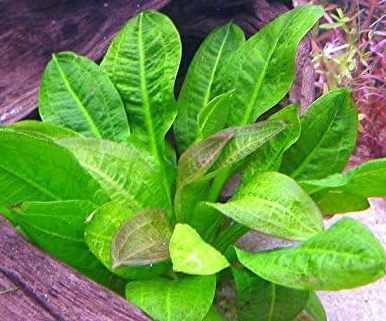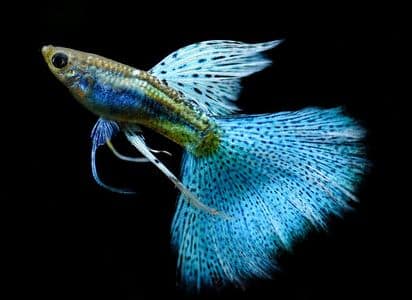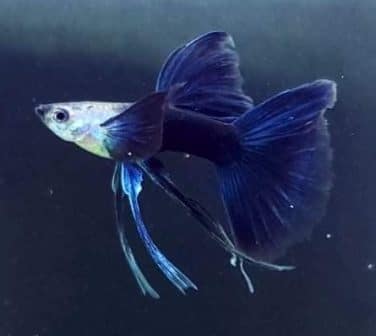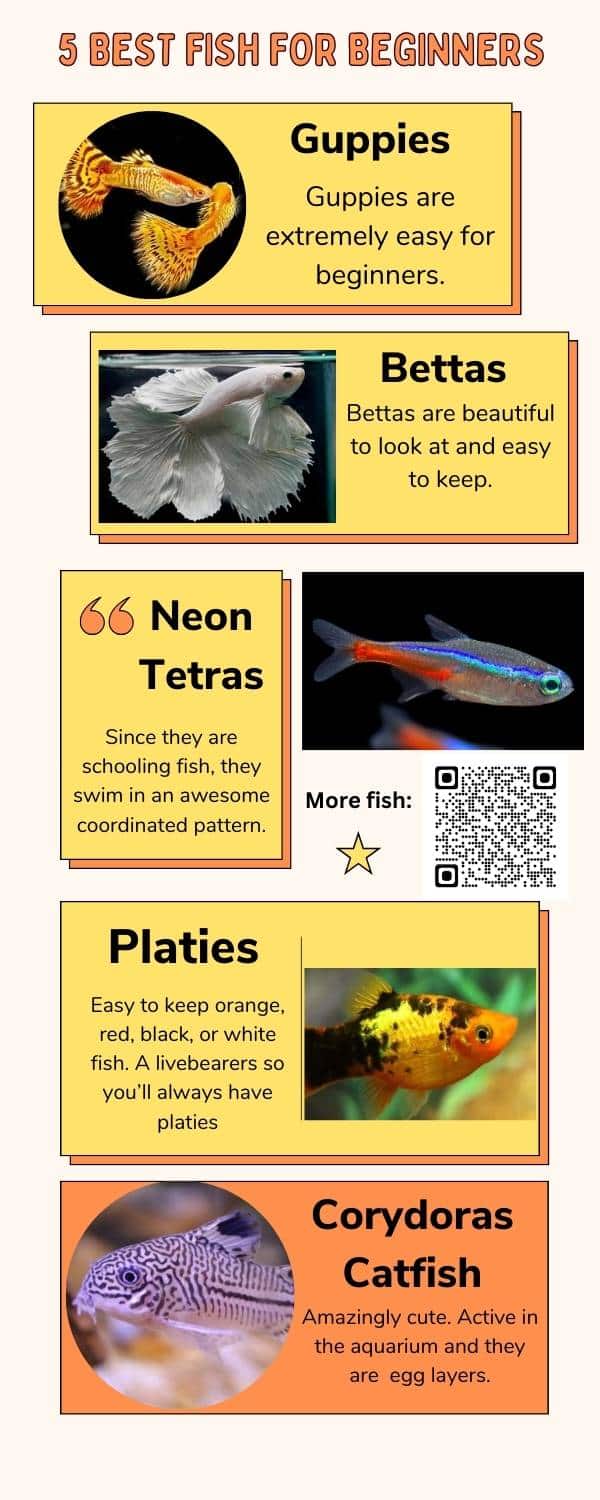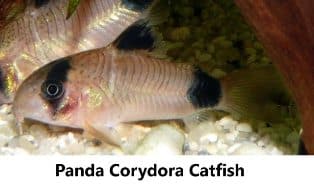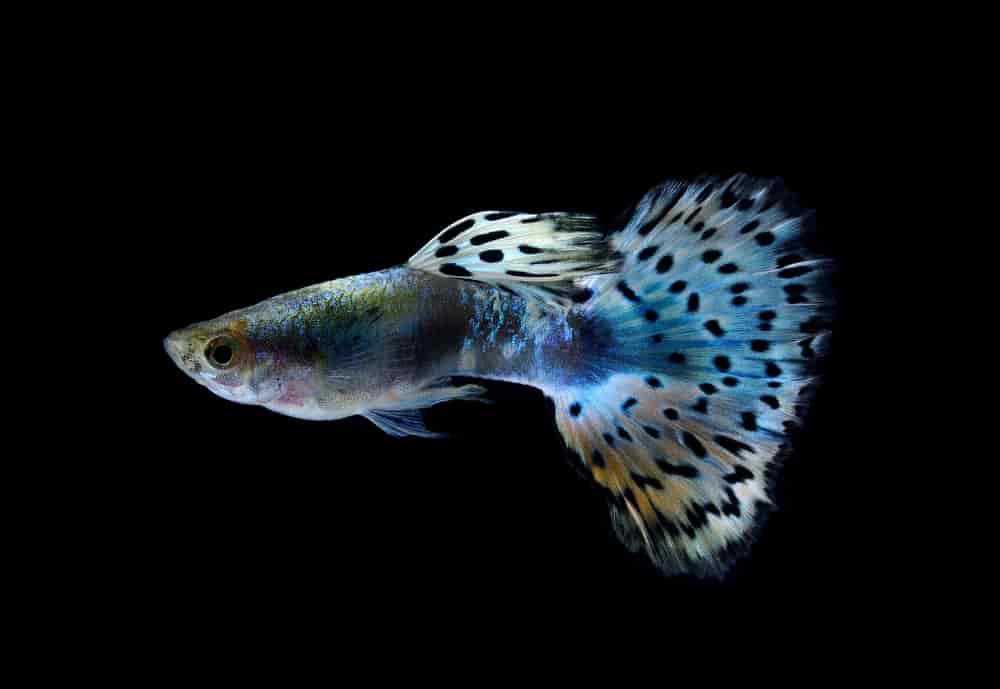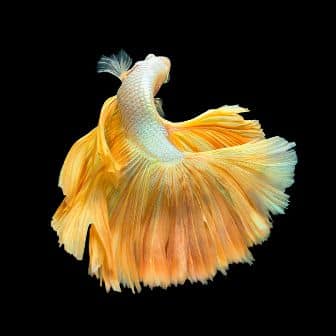My Top 5 Fish for Beginners: All Are Beautiful and Fun to Keep
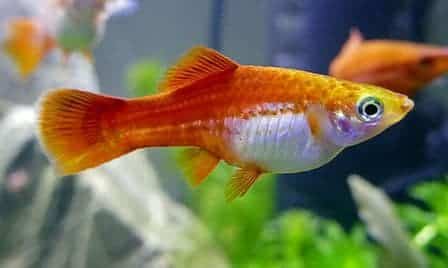
- Guppies
- Bettas
- Neon Tetras
- Platies
- Corydoras Catfish
Introduction:
Finding the best fish for beginners is no easy task. There are so many options, and they are all beautiful.
In this article, we cut through the clutter. You may have read our guide, The 20 Best Fish for Beginners, but today we’ll focus on the top 5 candidates to be your first aquarium fish.
Guppies
Tap Here to Discover the Best Deals on Guppies on Amazon.
Why do we like them?
Guppies turn aquariums into art pieces.
Guppies are energetic swimmers that have risen to fame thanks to their vibrant colors and elaborate tails. They are like the peacocks of the water and thrive in communities of other guppies.
What that means to you is that even if you don’t have top-notch aquarium design skills, you could still place them in a tank and have nothing shy of an art piece.
They are fun to feed:
When it comes to food, there are 23 different options to what guppies eat, making it a great opportunity to bond with your fish. They’ll take anything from regular fish food to live food like brine shrimp and even plain veggies like cucumber, spinach, and zucchini.
This gives you more opportunities to watch them swim and interact with them, which is a pretty relaxing activity. They might be the best fish for beginners.
They are friendly:
Guppies are very peaceful fish that are known for their mild nature. That means that if you decide to bring on additional species, like shrimp, crabs, or other fish that will be mentioned further down the page, you’d be able to do so without worry.
Ease of care
Guppies are very easy to care for. This is why so many beginners start out with them. They require four things to thrive:
- The aquarium
- A filter
- An aquarium heater
- A few aquarium decorations.
Guppies are also relatively clean fish that don’t soil the aquarium like others. They’re hardy as well, meaning you have greater room for error as you learn the ins and outs of the hobby.
→ Amazon Has the Guppies You’ve Been Looking For – Tap Here to See Them
Negatives:
Guppies breed pretty rapidly. Just to give you an idea, the average female gives birth to 20 to 100 fry every single month. The minimum tank you can get is a 10-gallon tank that will house about 4 females and 2 males.
You can do the math; population control is a must. The bad news is that guppies rarely eat their offspring. You will want a predator fish, like an angelfish, in with your guppies to keep the numbers down.
Betta Fish
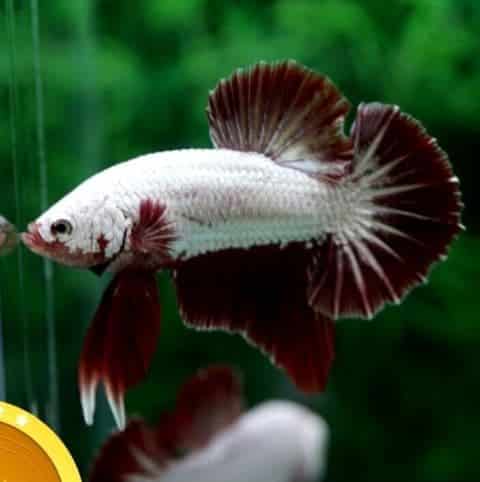
Why we like them:
Of course, their beauty is the main reason. They bring a certain kind of elegance to a fish tank. Most of their body is their tail, which has a very regal flow to it.
Just like guppies, bettas are known for their vibrant colors, adding instant splendor to any aquarium.
They have great personalities:
Beauty isn’t everything in life, is it?
The Ultimate Guide to Bristlenose Plecostomus Fish: Care, Breeding, and More!
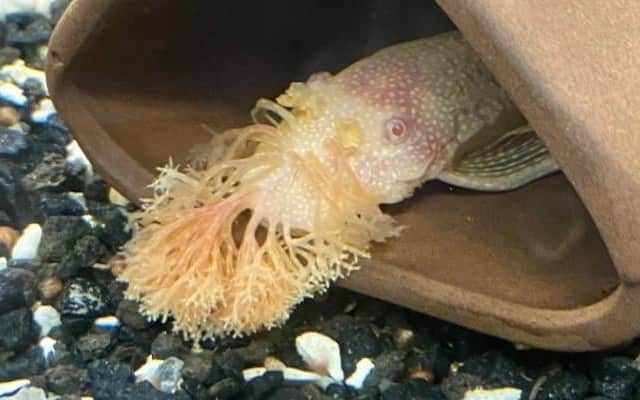
“These bizarre looking fish look like they came from another, alien world…”
Bettas are packed with personality and are naturally curious. They like to explore the tank, swim side-to-side, and interact with the decorations you place in their aquarium.
Great for bonding:
Out of all of the best fish for beginners out there, you’ll find the most people who swear up and down that their betta recognizes them when they come back from work. They are fun to feed and will take a variety of foods, like commercial fish food and live food like brine shrimp.
Ease of care:
Betta fish are relatively easy to care for, making them an excellent choice for beginners. They require minimal maintenance and can tolerate a wide range of water conditions.
They thrive in warm water temperatures, ideally between 75°F and 80°F, but they can adapt to slightly cooler temperatures as well.
They are omnivores and enjoy a varied diet, readily accepting both commercial flakes or pellets and live or frozen foods like bloodworms and brine shrimp.

Betta Fish Negatives:
While betta fish are generally low-maintenance, their territorial behavior can pose challenges in community tanks. They may exhibit aggression towards other fish, particularly those with long, flowing fins or bright colors that they perceive as rivals.
What that means is that a single betta is the end all be all. You’ll probably only get a single betta, and other tankmates like shrimp or crabs are impossible, mainly because the betta will attack and kill them.
Neon Tetras
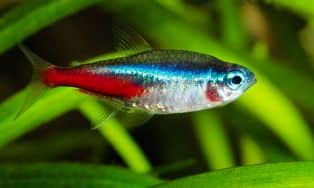
Why we like them:
Glowing Color:
Neon tetras are like a living light show in your tank. Where guppies and bettas have vibrant colors that catch your eye, neon tetras have a shimmer to them that makes them stand out.
They are best for rooms that have a lot of light, whether it’s natural or artificial. These little guys can shine brighter than a disco ball. They are called neon tetras for a reason.
Peaceful Vibes:
They are compatible with a lot of other fish breeds and rarely have aggression issues.
That makes caring for them simple. As long as you stock your tank correctly with enough hiding spots in the form of decorations, they’ll be well behaved, which will eliminate a lot of headaches.
Made for tanks big and small:
Neon tetras make great tankmates. Since they are schooling fish, they swim in a coordinated pattern that provides them protection from predators. That also means they play defense most of the time and are not trying to go after other tankmates for their own gain.
A lot of beginners start with a small tank with just a few tetras and slowly grow into a bigger tank that includes other fish like corydora catfish and shrimp.
Ease of care:
Neon tetras are incredibly adaptable and forgiving, making them an excellent choice for beginners. They prefer acidic to neutral water with a temperature range of 70°F to 80°F. Neon tetras are omnivores and will readily accept a varied diet of high-quality flake foods, freeze-dried foods, and live or frozen foods.

Negatives:
While neon tetras are generally hardy and easy to care for, they can be sensitive to fluctuations in water quality. It’s essential to maintain stable water parameters and perform regular water changes to ensure their health and well-being.
Additionally, neon tetras are small and may be intimidated or outcompeted for food by larger or more aggressive tankmates. Careful consideration should be given to tankmates to ensure compatibility and minimize stress.
Platies

Platies: Embarrassing name. Gorgeous fish. Tap here to view more on Amazon.
Color, Color and More Color:
You’ve heard it before, and now you’re hearing it again: Platies are beautiful. Unlike guppies and tetras, platies are more limited in their color range, with most being anything from bold oranges and fiery reds to subtle pastels and metallic hues.
And just like the others, you can simply add them to the water and have yourself an impressive underwater world.
They Are Hardy and Adaptable:
Platies are incredibly hardy and adaptable fish, making them well-suited for beginning hobbyists. They can tolerate a wide range of water conditions, including fluctuations in temperature and pH, making them forgiving of minor mistakes.
Their resilience and adaptability mean that even novice aquarists can enjoy success with platies, providing a satisfying and rewarding fishkeeping experience.
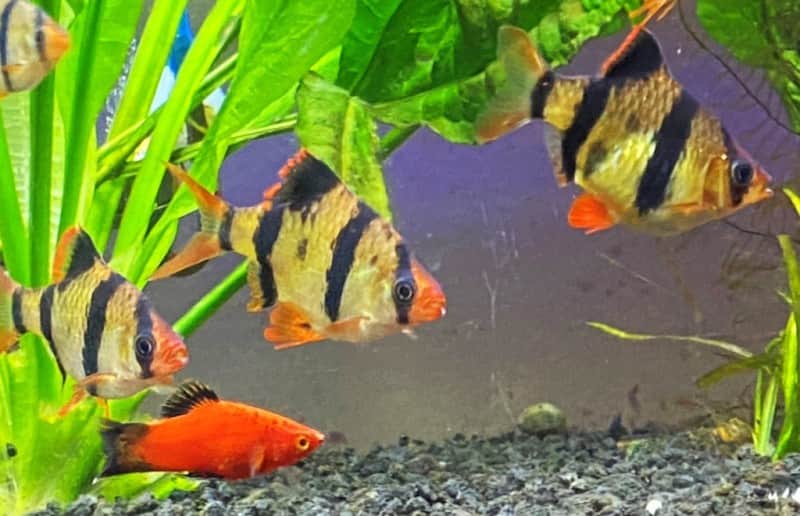
Are Tiger Barbs peaceful or aggressive?
“Peaceful but they are fin-nippers and they do pick on each other…”
Image above: Platies in the website owners aquarium
I did a fool stunt…by shoplifting these platies! Dont be me. Tap here to buy instead (Amazon).
(Chill. No actual shoplifting was involved in the writing of the above blurb. sheesh).
Prolific Breeders
One of the most interesting aspects of keeping platies is their prolific breeding behavior. As livebearing fish, they are known for their rapid reproduction, with females giving birth to large numbers of fry every few weeks.
While this may seem overwhelming at first, it provides beginner fishkeepers with an opportunity to observe the fascinating process of birth and growth in their own aquarium. Plus, raising platy fry can be a rewarding and educational experience for fish keepers of all ages.
This said, like guppies that are also livebearers, you should consider keeping a predator fish with them to control the platy population.
Ease of care:
Platies are exceptionally hardy and adaptable, making them an excellent choice for beginners. They can thrive in a wide range of water conditions, although they prefer slightly alkaline to neutral water with a temperature range of 70°F to 80°F. Platies are omnivores and will readily accept a varied diet of high-quality flake foods, freeze-dried foods, and live or frozen foods like bloodworms and brine shrimp.
Negatives:
One potential drawback of platies is their propensity for breeding.
Like guppies, platies are livebearers and can produce large numbers of fry if conditions are favorable. While this can be exciting, it can also lead to overcrowding if it is not managed properly. Population control measures, such as separating males and females, may be necessary to prevent overpopulation in the tank.
Additionally, platies may nip at the fins of long-finned or slow-moving tank mates, so compatibility should be carefully considered when selecting tank mates.
Corydoras Catfish
Why we like them:
Grow Your Own Live Fish Food – 8 Easy Types
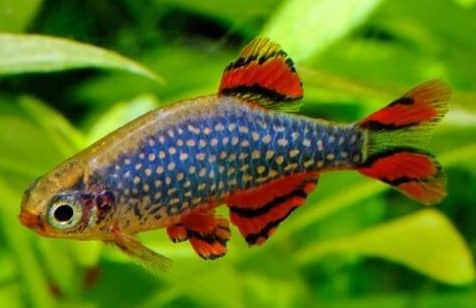
“To the container, add lettuce, spirulina, yeast or best, farm animal dung. Fill your container with conditioned water and your choice of the mentioned ingredients.”
Bottom-Dwelling Clean-Up Crew
Corydoras catfish have risen to fame for their role as bottom-dwelling scavengers, tirelessly scouring the substrate for leftover food. With their delicate barbels and specialized mouths, they are expert cleaners, helping to keep the aquarium clean and free of leftover food.
They are a gentle, peaceful fish type.
Despite their name, Corydoras catfish are gentle and peaceful creatures that coexist with many different tankmates. They are non-aggressive and unlikely to bother other fish, making them excellent community fish for beginner aquariums.
Fascinating Behavior
Corys are not just cleaners; they’re also fascinating creatures in their own right. They are incredibly sociable and are known for their playful antics and curious nature, often engaging in darting, exploring, and even playing around with tank decorations.
Watching them interact with their surroundings and each other adds another layer of fun to the aquarium, making them a delightful and entertaining addition for the absolute beginner.
Ease of care
Corydora catfish are incredibly hardy and adaptable, making them an excellent choice for beginners. They can tolerate a wide range of water conditions, although they prefer acidic to neutral water with a temperature range of 72°F to 78°F.
Cory cats are omnivores and will readily accept a varied diet of sinking pellets, algae wafers, and live or frozen foods like bloodworms and brine shrimp.
THE SECRET OF MAKING PEOPLE LIKE YOU. (Buy Corydoras Catfish on eBay).
Negatives
One potential challenge with Corydoras catfish is their sensitivity to poor water quality. They have delicate barbels that are susceptible to damage from rough substrate or debris, so it’s essential to provide a soft, sandy substrate and maintain excellent water quality through regular water changes and tank maintenance.
Additionally, Cory cats are peaceful and may be outcompeted for food by more aggressive tank mates, so care should be taken to provide adequate feeding opportunities for all fish in the tank.
Article: How to care for your new fish bowl
“If you look closely, in the middle of the picture of my 2 gallon, seen through the water, is a black wire coming up from the heater. This heater lays flat underneath (not in) the aquarium bowl…”
Summing Up
We’ve covered a lot, so let’s wrap up everything mentioned:
If you are going for color, choose guppies, bettas, tetras, or platies.
If you want multiple colorful fish – choose guppies, tetras or platies
If you want a single fish – choose a betta.
If you want a low maintenance fish – choose a corydoras catfish.
Comparision Table – 5 easy, best fish for beginners:
Guppies
Very, very easy
Peaceful and Gentle
Livebearers
Drawbacks: Extremely prolific – cull heavily or add a predator fish.
Betta Fish
Easy
Usually peaceful. Interacts with owner.
Nesting egglayers. Male guards eggs.
Drawbacks: Males are aggressive towards other male betta fish.
Neon Tetras
Medium
Peaceful, schooling fish. Little interaction with owner.
Egg Layers. Fry are extemely small.
Drawbacks: To stay healthy they prefer fairly acidic water. 6.0 pH.
Corydoras Catfish
Medium
Peaceful, schooling fish. Little interaction with owner.
Egg Layers
Drawbacks: To stay healthy they prefer clean water. Frequent water changes.
Platies
Very easy
Peaceful & gentle. Will interact with the owner.
Prolific livebearers
Drawbacks: Same issue as guppies but not quite as bad. Add a predator fish.
5 steps you can take to stop your aquarium plants from dying
